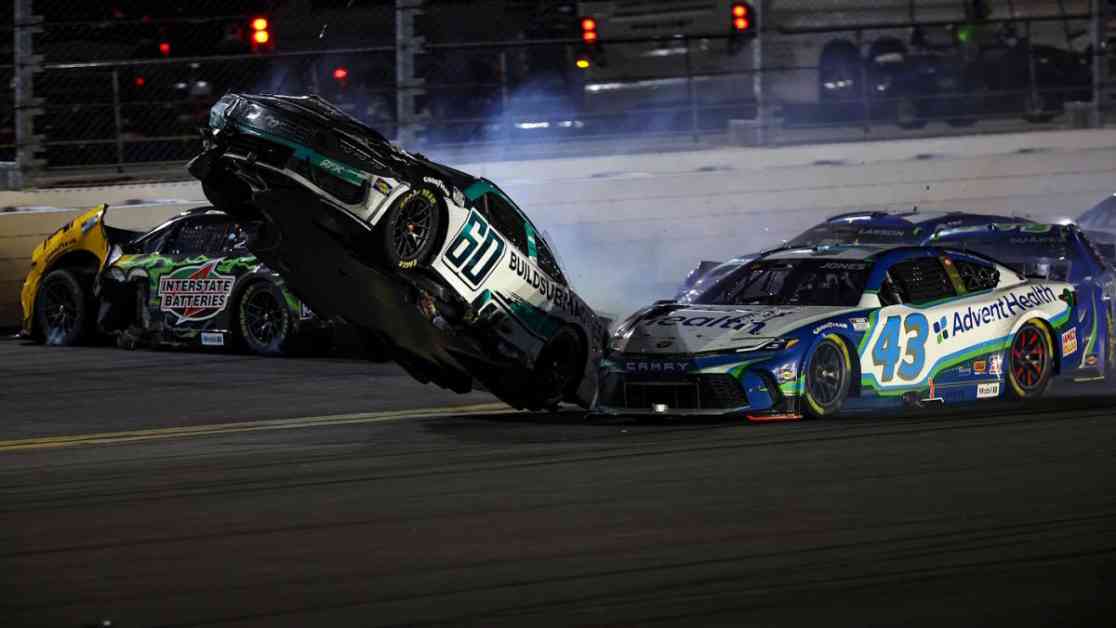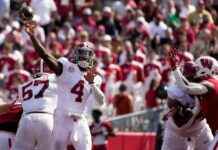The 2025 Daytona 500 showcased a heart-stopping moment as Ryan Preece’s car went airborne and flipped spectacularly during the final laps of the race. The incident unfolded amidst a chaotic multi-car crash triggered by Christopher Bell’s spin while battling for the lead with just four laps remaining. Bell, in a tight tussle with his Joe Gibbs Racing teammate Denny Hamlin, was nudged by Cole Custer, sending him careening into the path of Preece’s car.
The impact launched Preece’s vehicle into a terrifying sequence, with the right front wheel briefly lifting off the ground upon initial impact before the left front followed suit after contact with Erik Jones’ car. The car somersaulted into the air, landing upside down before skidding up the Turn 3 banking and flipping back onto its wheels. A spine-chilling deja vu moment for Preece, who had previously experienced a similar harrowing flip on the same backstretch in August 2023.
Despite the intensity of the crash, Preece emerged unscathed, a testament to the safety measures in modern NASCAR vehicles. The incident, however, shed light on the dangers inherent in high-speed racing, even with advanced safety protocols in place. Preece, a seasoned Cup driver with RFK Racing, was behind the wheel of the team’s No. 60 Ford, aiming to make an impact in his debut race for the new outfit.
Expert Analysis: The Physics of a NASCAR Crash
To understand the dynamics at play during Preece’s awe-inspiring flip, we turned to Dr. Sarah Wilson, a renowned physicist specializing in motor racing accidents. Dr. Wilson highlighted the intricate balance of forces involved in such high-speed collisions, emphasizing the crucial role of aerodynamics in determining a car’s trajectory post-impact. “When a vehicle loses contact with the track, aerodynamic forces play a pivotal role in its subsequent movement,” she explained.
As Preece’s car lifted off the ground, the intricate interplay between air pressure and vehicle speed dictated its path through the air. The sudden change in aerodynamic forces as the car rotated mid-air contributed to the dramatic flipping motion witnessed by spectators. Dr. Wilson underscored the significance of safety features like roll cages and impact-absorbing materials in mitigating the risks associated with such violent crashes.
Lessons Learned: Enhancing Track Safety
The incident involving Ryan Preece reignited discussions around track safety enhancements in NASCAR, particularly in high-speed venues like Daytona International Speedway. Following Preece’s earlier flip in 2023, track officials had taken steps to resurface the section of the backstretch where the accident occurred, aiming to minimize the likelihood of cars going airborne.
However, the recurrence of a similar incident raised questions about the efficacy of these measures and the need for further safety improvements. NASCAR officials, in collaboration with track engineers and safety experts, are now revisiting their strategies to bolster driver protection and prevent future airborne accidents. The incident served as a stark reminder of the inherent risks in motorsport and the constant evolution of safety protocols to safeguard drivers’ lives.
In conclusion, Ryan Preece’s dramatic flip at the 2025 Daytona 500 underscored the high-stakes nature of NASCAR racing and the resilience of drivers in the face of adversity. As the racing community reflects on the incident, the pursuit of enhanced safety measures remains paramount to ensure the well-being of competitors and the longevity of the sport. The indomitable spirit of drivers like Preece serves as a testament to their unwavering dedication to the thrill of racing, even in the face of perilous moments on the track.












